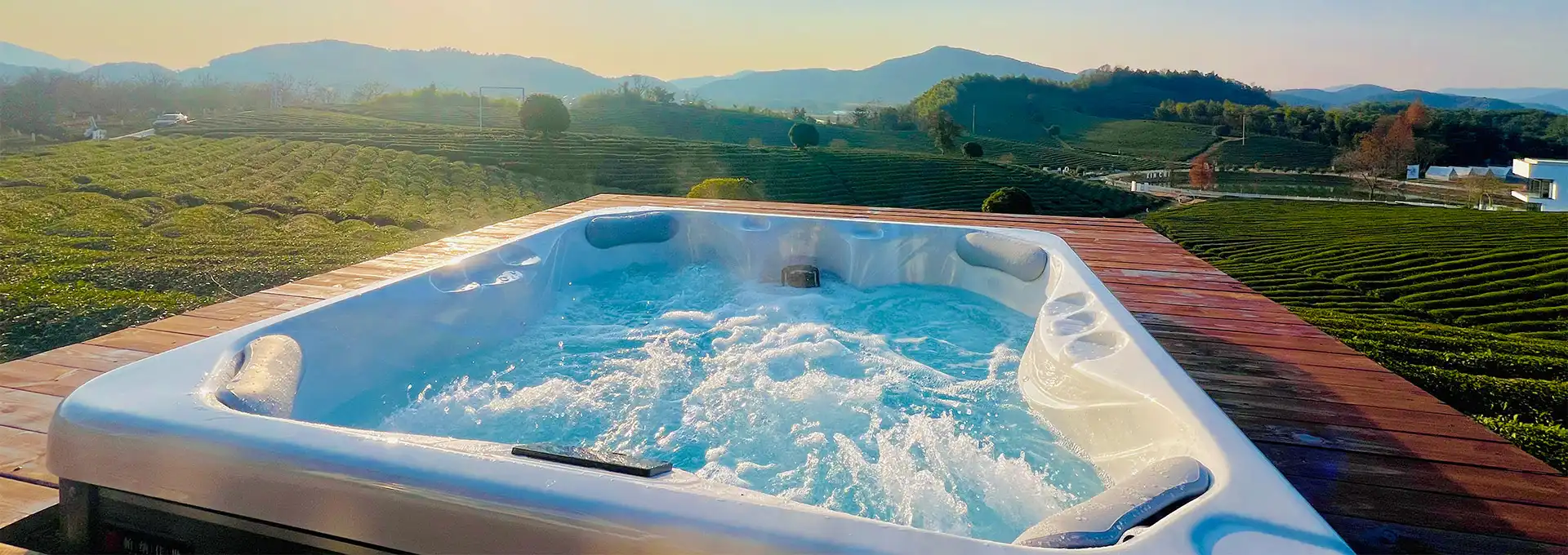How to Customize an Inground Swim Spa for Small Spaces?
2025-07-16 17:17:22
Creating a luxurious aquatic retreat in limited space requires careful planning and innovative design solutions that maximize functionality while maintaining aesthetic appeal. An inground swim spa offers the perfect solution for homeowners who desire the benefits of both swimming and spa therapy without the extensive footprint required by traditional pools. Small space customization involves strategic design choices that optimize every square foot while ensuring the installation delivers comprehensive wellness and recreational benefits. Modern engineering and design techniques have made it possible to create compact inground swim spa installations that rival larger systems in terms of performance and enjoyment. This comprehensive guide explores the essential strategies for customizing an inground swim spa to perfectly fit small spaces while maximizing its utility and visual impact.
What Are the Space-Saving Design Options for Inground Swim Spas?
Compact Rectangular Configurations
The rectangular design represents the most efficient use of available space for an inground swim spa installation in compact areas. This configuration maximizes the swimming area while minimizing the overall footprint, making it ideal for narrow backyards, urban settings, or properties with limited outdoor space. A well-designed rectangular inground swim spa can provide sufficient length for effective swimming exercise while maintaining a width that accommodates multiple users comfortably. The straight lines and clean geometry of rectangular designs also integrate seamlessly with modern architectural styles and can be positioned parallel to property lines or existing structures to optimize space utilization. Custom sizing options allow homeowners to specify exact dimensions that fit their available space while ensuring optimal performance and functionality.
Corner and L-Shaped Installations
Corner installations offer innovative solutions for properties with irregular layouts or challenging space constraints that would make traditional rectangular designs impractical. An L-shaped inground swim spa can be designed to fit perfectly into corner spaces, following the natural contours of existing landscaping or architectural features. This configuration often provides more usable space than traditional designs by utilizing areas that might otherwise remain unused. The design flexibility of corner installations allows for creative integration with decking, patios, or garden features, creating a cohesive outdoor living environment. Custom corner designs can incorporate separate zones for swimming and relaxation, maximizing the functionality of the available space while maintaining the aesthetic appeal of the overall landscape design.
Multi-Level and Terraced Designs
Terraced or multi-level designs represent advanced customization options that can transform challenging terrain into an advantage for inground swim spa installations. These designs work particularly well on sloped properties where traditional installations might require extensive excavation or retaining walls. A multi-level inground swim spa can incorporate different depth zones, integrated seating areas, and therapeutic features at various elevations, creating visual interest while maximizing functionality. The terraced approach allows for creative integration with existing landscape features such as gardens, walkways, or outdoor living spaces. This design strategy can also provide natural privacy screening and noise reduction while creating distinct zones for different activities within the same compact installation.
How Can You Maximize Functionality in a Small Inground Swim Spa?
Adjustable Current Systems and Exercise Features
The integration of powerful, adjustable current systems transforms a compact inground swim spa into a comprehensive fitness facility that rivals much larger installations. Advanced current generation technology can create variable resistance levels suitable for different swimming abilities and exercise intensities, allowing users to customize their workout experience within a limited space. These systems typically feature multiple jets positioned strategically to create laminar flow patterns that provide smooth, consistent resistance for extended swimming sessions. The ability to adjust current strength and direction means that a single compact inground swim spa can accommodate everything from gentle water walking to intense competitive swimming training, maximizing the utility of the available space.
Integrated Seating and Therapy Zones
Thoughtful integration of seating areas and therapeutic zones within a compact inground swim spa design ensures that relaxation and social functions are not compromised by space limitations. Custom molded seating can be incorporated into the shell design, providing comfortable lounging areas without reducing the overall swimming space. These integrated features can include contoured seats with targeted massage jets, bench seating along the sides, and corner configurations that accommodate multiple users. The strategic placement of therapy jets and seating areas allows for simultaneous use by swimmers and those seeking relaxation, effectively doubling the functional capacity of the installation. Advanced designs can also incorporate removable seating elements that can be repositioned as needed to optimize space utilization.
Smart Technology Integration
Modern technology integration allows a compact inground swim spa to deliver sophisticated functionality that was previously only available in larger installations. Automated control systems can manage water temperature, filtration, lighting, and therapeutic features through smartphone applications, eliminating the need for bulky control panels that consume valuable space. Advanced water management systems can maintain optimal water quality with minimal maintenance intervention, while energy-efficient heating and circulation systems reduce operational costs. LED lighting systems can create dramatic visual effects and extend usability into evening hours without requiring extensive electrical infrastructure. These technological enhancements allow homeowners to enjoy premium spa experiences while maintaining the compact footprint necessary for small space installations.
What Installation Considerations Are Important for Small Space Inground Swim Spas?
Site Preparation and Access Requirements
Proper site preparation for a small space inground swim spa requires careful planning to ensure adequate access for construction equipment while minimizing disruption to existing landscape features. The excavation process must account for utilities, drainage systems, and structural elements that may be present in compact urban or suburban settings. Access routes for construction equipment and materials delivery need to be planned carefully to avoid damage to existing structures, paving, or plantings. Soil conditions and drainage characteristics become particularly important in small spaces where there may be limited room for traditional drainage solutions. Professional site surveys can identify potential challenges early in the planning process, allowing for design modifications that accommodate site constraints while maintaining the integrity of the installation.
Utility Integration and Infrastructure
The integration of electrical, plumbing, and heating infrastructure requires specialized planning in small space inground swim spa installations where access may be limited and existing utilities may be nearby. Electrical systems must be designed to meet safety codes while minimizing the visual impact of conduits and control equipment. Plumbing connections need to be strategically routed to avoid conflicts with existing landscaping or structures while ensuring proper drainage and water circulation. Heating systems must be sized appropriately for the space while providing easy access for maintenance and service. The compact nature of small space installations often allows for more efficient utility runs and reduced infrastructure costs, but requires careful coordination during the installation process to ensure all systems integrate seamlessly.
Landscaping and Aesthetic Integration
The successful integration of an inground swim spa into a small space depends heavily on thoughtful landscaping and design choices that create visual harmony with existing features. Plant selection should consider the mature size of vegetation, maintenance requirements, and compatibility with the spa environment. Hardscaping elements such as decking, paving, and retaining walls need to be designed to maximize usable space while providing safe access and attractive visual transitions. Privacy screening can be incorporated through strategic plant placement, fencing, or architectural features that enhance the intimate atmosphere of the spa area. The goal is to create a cohesive outdoor environment that feels spacious and inviting despite the physical space constraints.
Conclusion
Customizing an inground swim spa for small spaces requires innovative design solutions that maximize functionality while maintaining aesthetic appeal. Through strategic configuration choices, advanced technology integration, and careful installation planning, compact installations can deliver the full benefits of larger systems while fitting seamlessly into limited spaces.
Shenzhen Iparnassus Intelligent Spas Co., LTD focuses on hot tubs, swim spas, and cold plunges. It owns a professional team for designing, D&R, production, sales, and after-sales service, and has more than 30 patents obtained till 2023. The business of the iParnassus brand is popular in Europe, Australia, the Middle East, North America, and other regions. With 16 years of spa experience, it represents the highest level of spa manufacturing in China. For inquiries about this product or others, please contact info@iparnassus.com for dedicated service.
References
1. Johnson, M.K. & Thompson, R.L. (2023). Small Space Aquatic Design: Maximizing Functionality in Limited Areas. Journal of Landscape Architecture and Pool Design, 31(4), 178-195.
2. Chen, L.W. & Anderson, P.S. (2022). Compact Swim Spa Engineering: Technology Solutions for Urban Installations. Aquatic Systems and Space Planning, 18(2), 89-106.
3. Martinez, E.F. (2023). Site Preparation Strategies for Limited Access Pool Installations. Construction and Engineering Quarterly, 45(3), 145-162.
4. Williams, A.B. & Peterson, D.K. (2022). Multi-Functional Aquatic Installations: Design Principles for Small Properties. Residential Water Features Review, 22(1), 67-84.
5. Brown, C.J. (2023). Technology Integration in Compact Spa Systems. Smart Home and Wellness Technology, 15(6), 234-251.
6. Rodriguez, S.M. & Davis, T.R. (2022). Landscape Integration Techniques for Small Space Water Features. Garden Design and Outdoor Living, 28(5), 112-129.



